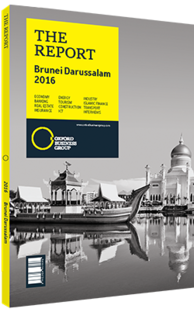Fishing and aquaculture hold promise for Brunei Darussalam's economy
With recent official forecasts of the Sultanate’s aquaculture sector turning into a BN$2bn ($1.4bn) industry, even as Brunei Darussalam continues to be one of South-east Asia’s top consumers of fish, the marine food sector looks set for major expansion in the years ahead. Aquaculture in particular dovetails with the Sultanate’s wider plans to boost its food processing industry, largely channelled through its halal food certification programme, which the government hopes will attract agri-food businesses from around the world to invest in local processing facilities.
Yet the fisheries and aquaculture sector does face some challenges from strong regional competition, depletion of fish stocks and variable production costs. Overcoming these will be key to the sector’s future.
Facts & Figures
Brunei Darussalam has 161 km of coastline, four major rivers, a continental shelf of 8600 km and an offshore Exclusive Economic Zone of some 36,600 sq km. These give it some major marine resources, which, when combined with a long tradition of fishing in the Sultanate – based originally around Kampong Ayer, the “water village” at the heart of the capital – have resulted in annual average per capita consumption of 47 kg of seafood. The Sultanate’s commercial fishing fleet is dominated by trawlers, whose main catch is ponyfish, while the smaller, purse seine net fleet’s principal catches are scads, sardines and Indian mackerel. The sector overseer is the Department of Fisheries (DoF), which comes under the Ministry of Primary Resources and Tourism.
Over the last five years, significant progress has been made in the fisheries industry. Gross fisheries output has increased from BN$95m ($67.6m) in 2010 to BN$110m ($78.3m) in 2015. While this still represents a small contribution to total GDP, at a low 0.4% in 2015, the sector’s potential is high, with estimates suggesting it could be worth BN$2.4bn ($1.7bn) by 2035 due to a combination of three key segments: capture, aquaculture and seafood processing.
Yet despite these robust figures, imports continue to make up a large proportion of Brunei Darussalam’s fish and seafood consumption. Malaysia is a major source for these imports, particularly neighbouring Sarawak and Sabah. The Sultanate’s strong stance on marine conservation is one reason local catches are unable to keep up with local demand, with the Sultanate introducing a moratorium on new fishing licences in 2008. The government has also extended the zone around its shores from which most trawlers are banned from five nautical km to almost 13. In addition, the Sultanate was also the first country in Asia to introduce a shark fishing ban, in 2013.
Aquaculture
Preserving marine resources while addressing high domestic demand is thus a major challenge for the sector, where one answer to this the development of an aquaculture segment. The DoF esimates that the segment could be worth BN$400m ($284.6m) by 2020, up from BN$10m ($7.1m) in 2015.
The DoF recently identified some 18,000 ha of offshore water that could be used for aquaculture farms, and has announced a strong push to encourage foreign investment in these areas. The DoF is working in partnership with the Brunei Economic Development Board (BEDB) in launching this initiative.
Four offshore areas being promoted for fish-cage culture by the BEDB are Pelong Rocks, which is close to Muara Port, and Litteldale, Nankivell, and Victoria I and II. Inshore, fish cages are also being promoted at the 40-ha Tanjung Pelumpong Fish Farm Industrial Site, where 16 local companies are currently active. Firms there such as AARR Rescan Fisheries and Sea Neptune Aquarius Enterprise currently export sea bass, grouper and other varieties to China, Hong Kong and Malaysia. Land-based aquaculture also currently includes four sites at Sungai Paku, with the prawn-breeding site at Pengkalan Sibabau currently producing 1200 tonnes of marine prawns, valued at approximately BN$10.2m ($7.3m), per annum.
You have reached the limit of premium articles you can view for free.
Choose from the options below to purchase print or digital editions of our Reports. You can also purchase a website subscription giving you unlimited access to all of our Reports online for 12 months.
If you have already purchased this Report or have a website subscription, please login to continue.

